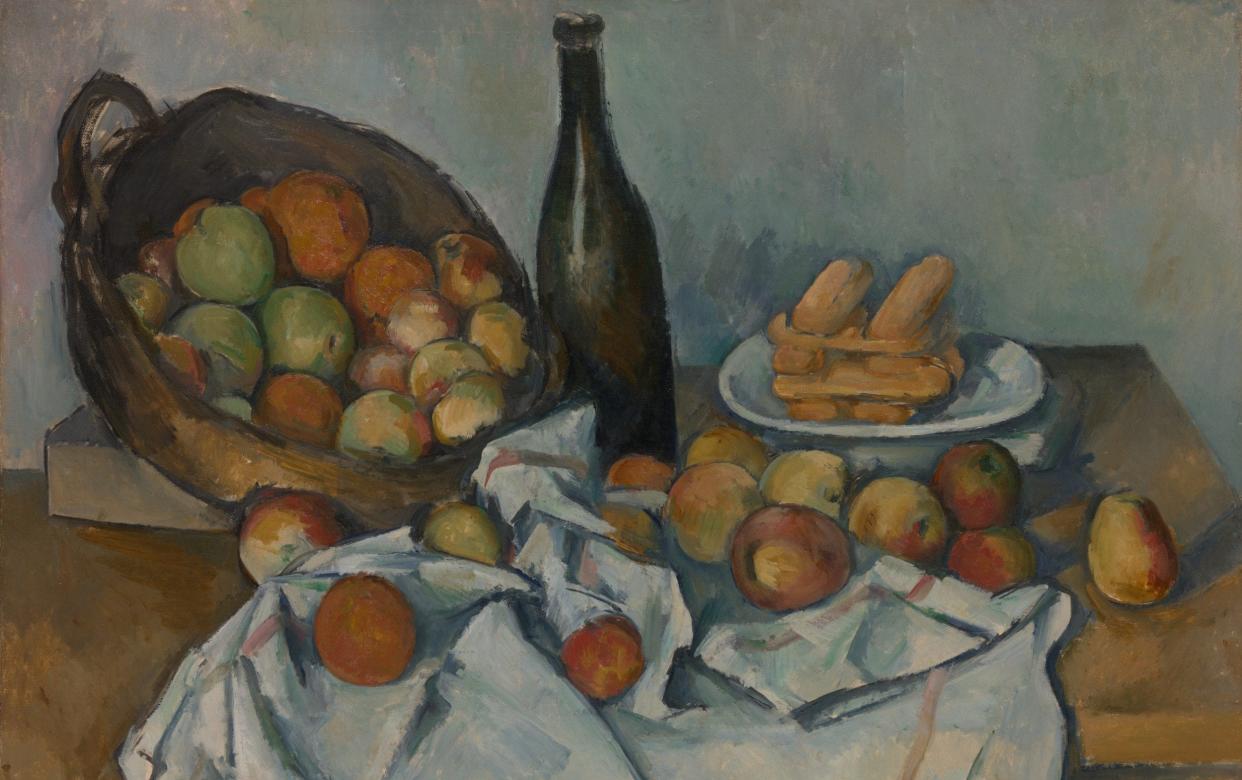Think you know Cézanne? This ravishing, revelatory show will make you think again

Here is the essential paradox of Paul Cézanne, the subject of a nigh-on note-perfect new survey at Tate Modern, the first in this country since the institution’s last offering in 1996: the French post-impressionist painter seems so traditional, yet he’s considered the alpha and omega of modern art.
Consider his favourite subjects: simple still lifes depicting humble objects (stoneware pitchers, lidded sugar bowls, platters of fruit); timeless landscapes twitching with heat and light. Supposedly, his life’s ambition was to create an art of solidity that would “endure”. Yet, for Pablo Picasso, modernism’s arch iconoclast and provocateur, he was “the father of us all”.
Art historians will never, perhaps, solve this conundrum. Tate’s exhibition, though, takes us some of the way towards a resolution. The evidence is before our eyes in the opening gallery, in the form of a still life lent by the Art Institute of Chicago, where a version of the show appeared earlier this year.
Among other objects, it depicts a dark glass bottle as wobbly as the Tower of Pisa, and a dramatically sloping basket of apples, like a catapult that’s about to be fired. A shadow running through the picture’s lower half creates an ominous rift, tearing asunder the composition, and with it any potentially reassuring sense of stability.
You don’t always notice it at first, but many of Cézanne’s paintings are like this: out of whack, skew-whiff, uncanny. Only he could make sprouting onions look like a 19th-century anarchist’s spherical bombs – fuses lit, about to be chucked – as he did in a famous still life featuring a plaster cast of a pudgy Cupid. When Cézanne paints a knife, it seems to levitate, as if wielded by a poltergeist. In one picture, trees spin like twin tornadoes. In another, a peasant’s red neckerchief resembles a slit throat.

As for his arrangements of fruit – pears, peaches, lemons, and deliciously juicy watermelons, as well as those famous apples (gorgeous orbs of orange, yellow, and red, suspended like tropical fish within the blue-green underwater tonality of their surroundings) – they teeter about like tumblers stacked up in the circus. These are pictures on the cusp of performing acrobatic leaps – or pratfalls. By trampling on linear perspective, and cussedly insisting on anti-illusionistic effects (such as leaving bare patches of canvas, each as glaring as a bald spot), Cézanne desecrated many of the sacred pictorial conventions that had lingered since the Renaissance.
This is a show of diligent, detailed scholarship that provides a cornucopia of pleasures for the eyes as well as the mind. Cleverly, carefully, like a picture restorer cleaning away layers of thick yellow varnish, the curators rub off the received wisdom about Cézanne, inviting us to consider him afresh. He was erudite and sensitive, we learn, not coarse or barbarous; patriotic, rather than apolitical; and more plugged into the metropolis than previously imagined – flitting frequently on the railway between Paris and his birthplace in Provence. He didn’t always paint at a snail’s pace, either.
Thus, a new Cézanne emerges: not the grizzly hermit of Aix, forging modernity in grumpy isolation, but someone tapped into the spirit of his times.
Having repositioned him, the show, hitherto chronological, becomes thematic – with a suite of astonishing rooms, each devoted to a quintessential subject, including his views of Mont Sainte-Victoire. The last gallery lingers on Cézanne’s final years, when his palette became russet, autumnal, and, instead of apples, he painted skulls. Simultaneously, he was experimenting with otherworldly, glowing watercolours.
It’s all riddling and ravishing; cryptic yet totally compelling. “Chatter about art is almost useless,” Cézanne said. Time, then, to stop prattling. Head for Bankside. Open your eyes.
From Oct 5; tate.org.uk

 Yahoo Movies
Yahoo Movies 
